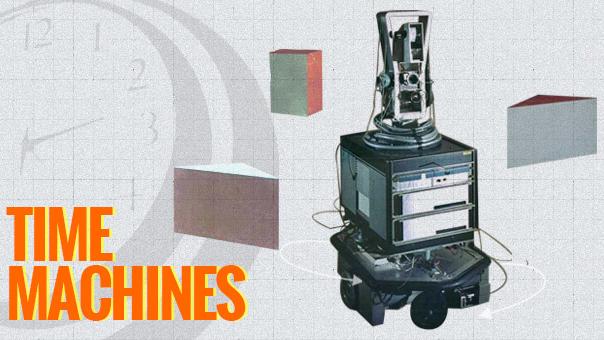project tango
Latest

Google and Qualcomm squeezed Project Tango tech into a smartphone
It seems like a decent of chunk of Google's big news today deals with its partnerships. The search giant is already teaming up with Levi's to explore the realm of smart Jacquard clothes, and now Google has confirmed that it's been working with Qualcomm to build its Project Tango world-sensing cameras into the chipmaker's reference phone designs. Those Tango-phones will be seeded developers and devices makers for now, and thanks to the arcane decisions that ultimately define a company's device-making strategy, we might not ever actually see a consumer-ready Tango phone. Still, Google's long-term ambitions are pretty clear: It'd like to get these Tango devices into our pockets en masse, and a closer relationship with one of the world's biggest mobile chipmakers is a great way to do it.

Google's 3D-sensing Project Tango is no longer an experiment
Yet another project is graduating from experiment to proper part of Google. Only two weeks ago, Glass left the confines of the Skunk Works-like Google X and became its own division headed up by Nest co-founder Tony Fadell. Now Project Tango, the 3D-sensing and -mapping concept, is moving on from the ATAP (Advanced Technology and Projects) labs to become a part of the company proper. Unfortunately what that means for the technology or what products it might eventually end up in isn't exactly clear. Will the next Nexus sport a depth-sensing IR camera? Maybe. Or perhaps they'll be used to build more advanced home automation and home monitoring tools for Nest. All we do know is that Tango will live on, even if the name "Project Tango" eventually fades away.

Google Project Tango smartphones heading to space this week
Google is no stranger to having some of its devices up in space, what with the Nexus S and One each taking on different missions in years past. Up next: Project Tango. The search giant's smartphone, which packs 3D sensors that allow it to track and map just about anything around it, has been playing a role in NASA's Synchronized Position Hold, Engage, Reorient, Experimental Satellite program, otherwise known as SPHERES. As Reuters notes, these spherical satellites could one day "take over daily chores for astronauts or even handle risky duties outside of the vessel." Accordingly, on July 11th, NASA and Google are doing good on the promise to launch Project Tango smartphones into orbit, where they will be used as "the brains and eyes" of the bowling ball-sized, hovering robots at the International Space Station.

WSJ: Google will give developers tablets that can see in 3D
Remember Google's Project Tango, a smartphone with depth-sensing cameras capable of capturing precise 3D images of both objects and people? According to the WSJ's homies people familiar with the matter, the company is about to produce a limited run of 4,000 tablets carrying the same technology. Given Facebook's newly-discovered enthusiasm for 3D, it appears as if Google is stepping up its efforts to keep pace with its rival. The WSJ's sources believe the devices will be handed out to developers who can find a purpose for the tech, and we're hoping that at least one falls into the hands of an Engadget reader who doesn't mind giving us a go.

App lets you attach digital messages to real-world objects... for fun?
For those who don't know, Project Tango is a Google-built prototype smartphone jam packed with Kinect-like 3D sensors and components. One of Mountain View's software partners involved in the project, FlyBy Media, has built what it's calling the first consumer app capable of utilizing Tango's image recognition skills to... chat with friends. Dubbed FlyBy, the app allows users to share text and videos messages by attaching them to a real-world object; like a menu at your favorite restaurant or collectible from your honeymoon. Recipients are notified once they're in close proximity, then they need only to scan said object and voila, message received. While the concept isn't new -- or popular... yet -- the company believes that this time people will catch on. Just think of it as geocaching your conversations. That could be fun, right?

Daily Roundup: Apple explains Touch ID, Google's modular phone and more!
You might say the day is never really done in consumer technology news. Your workday, however, hopefully draws to a close at some point. This is the Daily Roundup on Engadget, a quick peek back at the top headlines for the past 24 hours -- all handpicked by the editors here at the site. Click on through the break, and enjoy.

The next mobile imaging war won't be waged over megapixels
For the past several years, improvements in smartphone cameras have followed the "more megapixels" mantra. Samsung's Galaxy S5 is up from 13 to 16 megapixels; Sony's new Xperia Z2 packs a 20.7-megapixel Exmor model; and Nokia's Lumia 1020 with PureView is a 41-megapixel monster. However, Google's recent sensor-laden smartphone prototype, Project Tango, could herald a new direction. Though Mountain View is focused on 3D mapping, so-called depth camera tech could dramatically improve all the pictures you take with your smartphone. By using two lenses with different focal lengths, for example, you could zoom in on subjects with quality that rivals bulky optical zooms. It could also eliminate a number of other shortcomings without adding an awkward hump like the one seen on the Lumia 1020. You could soon have much better light sensitivity, less noise and depth of field control that rivals a DSLR. The benefits are clear, but Google is not alone in its pursuit. The battle for a better smartphone camera is on, and you could be the one to reap the rewards.

The 'first electronic person' was a box on wheels
Welcome to Time Machines, where we offer up a selection of mechanical oddities, milestone gadgets and unique inventions to test out your tech-history skills. Some humans have enough trouble navigating an apartment without stubbing their toes, and that's with a robust onboard computer, finely tuned sensory apparatuses and years of practice in the field. Shakey was a pioneering bot under the tutelage of the SRI Artificial Intelligence Center's (AIC) research team, and it would take its share of bumps and wrong turns as it learned its way around the lab. It was born in 1966 as an artificial intelligence project to develop robots with the ability to navigate real-world environments and make decisions on the fly in order to overcome obstacles and solve complex problems. Life magazine even gave Shakey the title of "first electronic person" for its efforts in a 1970 article, vaulting it to near peer-level status with its toe-crunching creators.

Here's an early look at Google Project Tango's indoor mapping abilities
Yesterday Google announced Project Tango, a prototype smartphone with a sophisticated 3D sensing system for mapping and tracking your surroundings. One day later, we've already got a sneak peek at the phone's indoor modeling capabilities, courtesy of TechCrunch and Project Tango partner company Matterport. Matterport, which creates 3D models of interior spaces, used one of the prototype Tango devices to create a map of the room you see below. When a Matterport employee moves the phone around the room, the company's software captures 3D data and color camera data, which it uses to construct a comprehensive model. The result is accurate enough to measure the height from floor to ceiling, and we imagine the company chose to map an insanely cluttered room to demonstrate the system's ability to process complicated information. Matterport's CEO says Tango's 3D mapping will only get better with a higher-resolution camera, but the 4-megapixel shooter on the current prototype clearly does a respectable job at 3D capturing already. Head past the break to see the video demo.

Download this Adobe Flash update now (again!), and other news for Feb. 21, 2014
For the second time this month, Adobe has released an emergency update to its Flash Player software on OS X and Windows. What's wrong with it this time? Here's what the researchers who discovered the latest vulnerability had to say: This threat actor clearly seeks out and compromises websites of organizations related to international security policy, defense topics, and other non-profit sociocultural issues. The actor either maintains persistence on these sites for extended periods of time or is able to re-compromise them periodically. This actor also has early access to a number of zero-day exploits, including Flash and Java, and deploys a variety of malware families on compromised systems. Based on these and other observations, we conclude that this actor has the tradecraft abilities and resources to remain a credible threat in at least the mid-term. Mac users can confirm what version they're running with this tool. The current, secure version (as of the time of this writing) is 12.0.0.70. Older versions put your system at risk. Users can manually download the latest version of Flash here. In other news: A teenaged Jony Ive almost gave up on a career in industrial design, but was talked out of it by renowned designer Tom Karen. Apple has registered several more new generic top-level domains including apple.technology, ipad.technology, iphone.technology, and mac.technology. Google is launching 'Project Tango,' a 3D-Mapping smartphone containing "customized hardware and software designed to track the full 3D motion of the device, while simultaneously creating a map of the environment." And it looks awesome.

Daily Roundup: Facebook buys WhatsApp, tablet buyer's guide and more!
You might say the day is never really done in consumer technology news. Your workday, however, hopefully draws to a close at some point. This is the Daily Roundup on Engadget, a quick peek back at the top headlines for the past 24 hours -- all handpicked by the editors here at the site. Click on through the break, and enjoy.

Google's Project Tango is a smartphone with sensors to map the world around you
Google's just announced Project Tango, a 5-inch Android smartphone prototype equipped with Kinect-like 3D sensors and other components to track motion and map your surroundings. Unlike other 3D-sensing devices including Kinect, Project Tango includes the Myriad 1 vision processor from Movidius, which allows for advanced motion and depth tracking without sucking a ton of power. Available to a limited group of developers today, the handset could enable enhanced indoor navigation and immersive gaming, among other things. Google's Advanced Technology and Projects (ATAP) group is the brains behind Tango, and ATAP head Johnny Lee (formerly of the Microsoft Kinect team) said that the prototype "strives to give mobile devices a human-like understanding of space and motion ... enabling new and enhanced types of user experiences." Gaming and navigation applications are two prime examples, but overall the goal seems to be harnessing precise location and mapping information to enhance your mobile experience. Google also mentions the possibility of navigation assistance for the visually impaired, and it's not a leap to guess that Mountain View could integrate ads with this sophisticated mapping technology as well. ATAP, one important holdover of Google's acquisition (and subsequent selling off) of Motorola, hadn't revealed any hardware prior to today's announcement, so we'll be following this project with interest. Head past the break for a video demo of Project Tango.








